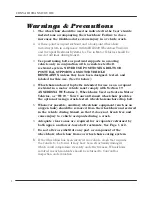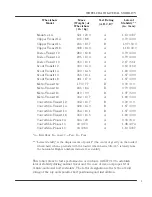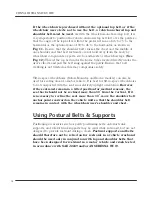
13
Providing Clear Space & Padding
Position the wheelchair aboard the motor vehicle to ensure sufficient clear
space in front of, and behind, the occupant.
(See Figs. 1 & 2)
If there are
any hard or sharp objects or components near the wheelchair, such as
components of lifts or fold-up seats, they must be covered with heavy-duty
energy-absorbing padding to ensure the safety of the wheelchair occupant
and other passengers.
Restraining the Wheelchair Occupant
Your Convaid transit wheelchair was dynamically crash tested
in a forward-facing configuration using an appropriately sized
crash-test dummy restrained by both upper-torso (shoulder)
and lower-torso (lap) belts. To reduce the possibility of head
and chest injuries resulting from contact with vehicle
components, you must use both upper and lower torso belts.
(See Figs. 5, 7 & 8)
Your Convaid transit wheelchair provides for the use of an optional wheelchair-
anchored lap belt. The optional belt, which has been dynamically tested in
accordance with Annex A of WC19, may be ordered from Convaid at a nominal
additional cost. To attach the lap belt to the wheelchair, secure the metal clips at
the ends of the lap belt
(Fig. 9)
to the pin/bushing connectors located on the
wheelchair’s rear securement-point brackets.
(Fig. 10)
Before loading the wheelchair onto the vehicle lift, fasten the lap belt over the
wheelchair user’s pelvis. The wheelchair user should wear the optional lap
belt as low over the pelvis and as snugly as possible without compromising
comfort. The vehicle-anchored shoulder belt may then be clipped to the
pin/bushing connector located on the lap belt near where it attaches to the
chair. When not in use, the optional lap belt may be looped underneath the
seat, buckled, and tightened.
PROPER
USE
OF
EQUIPMENT






































